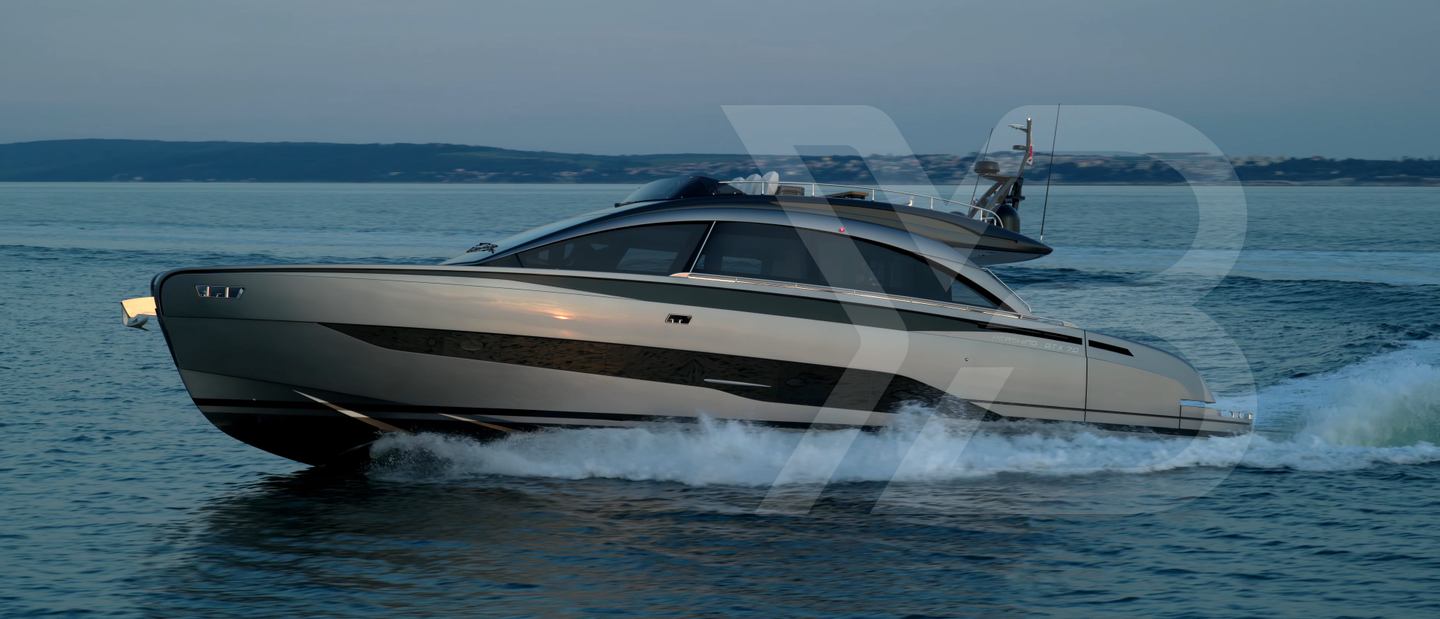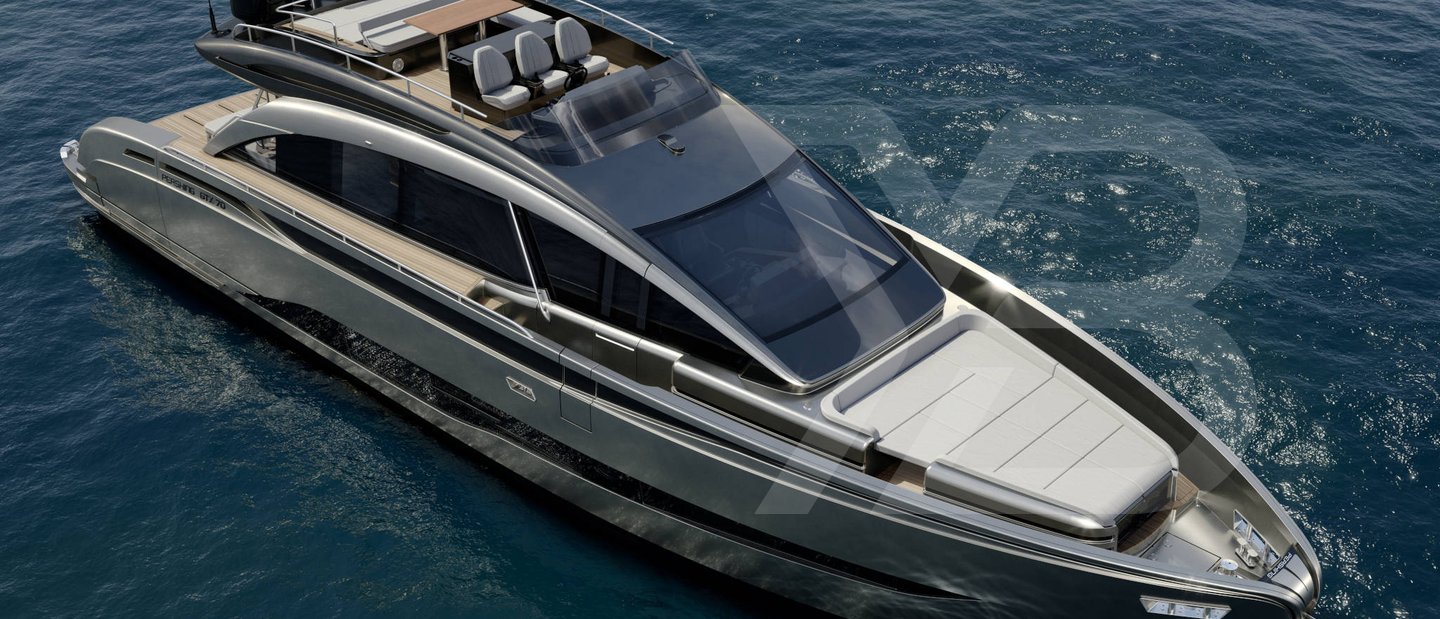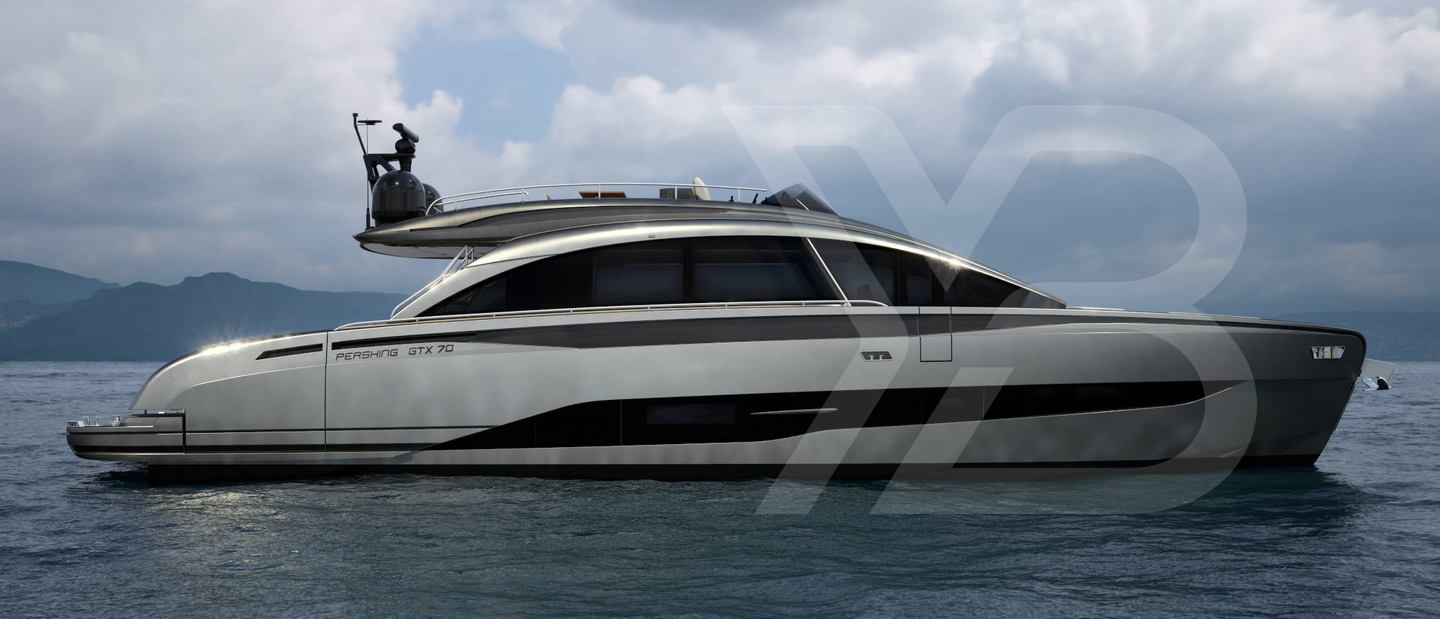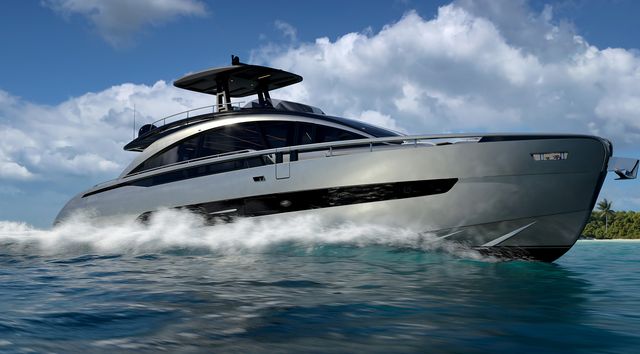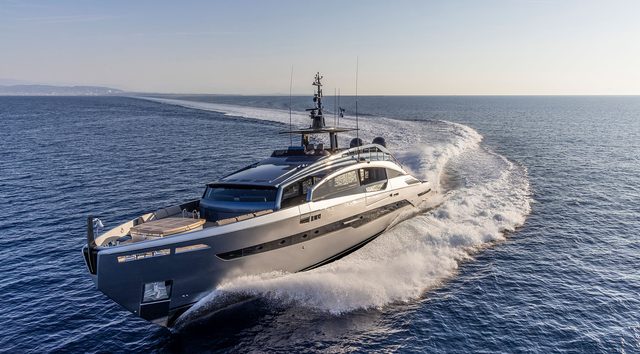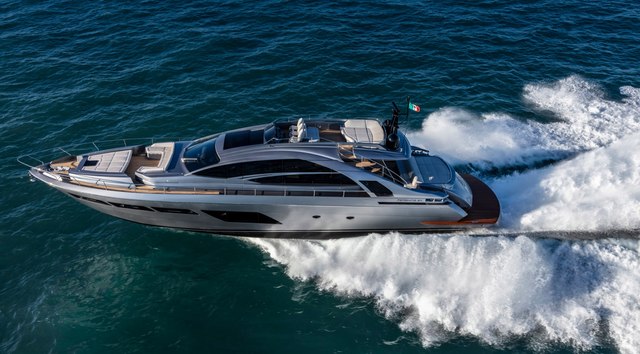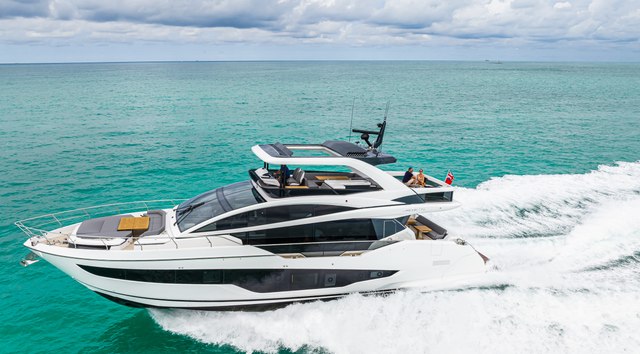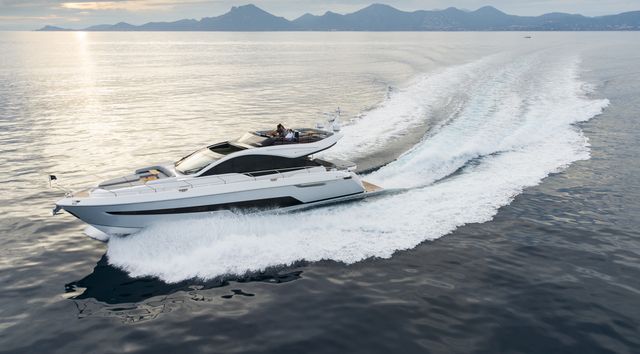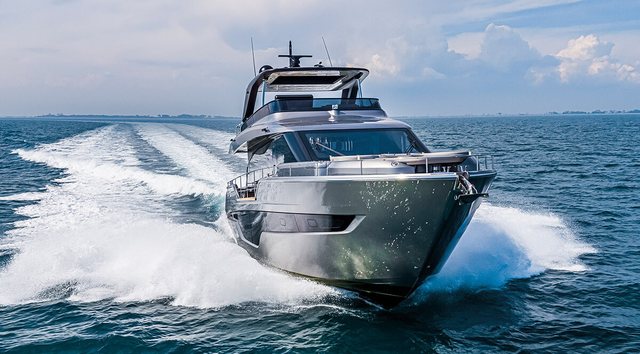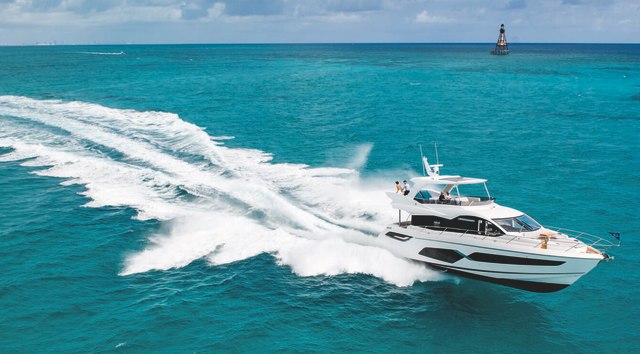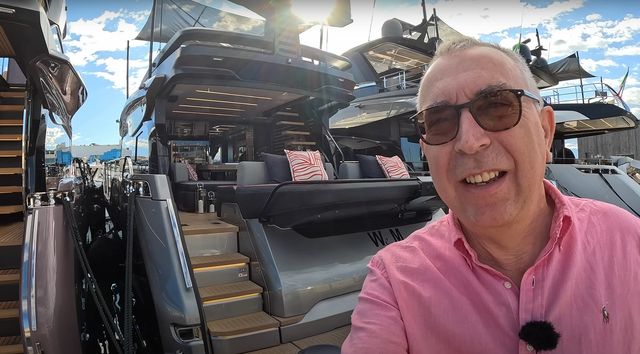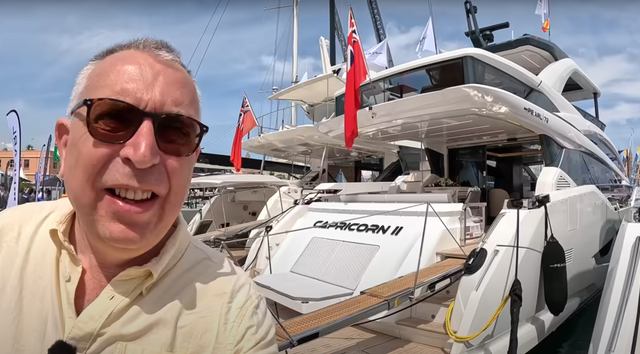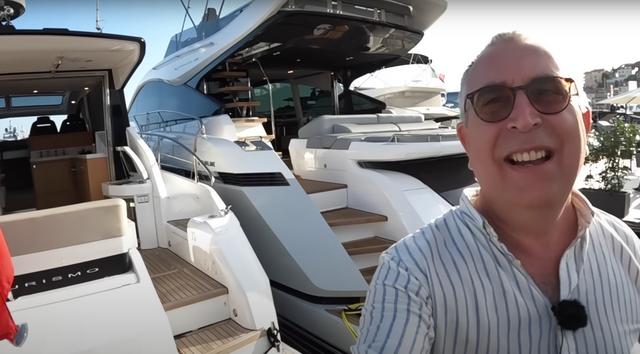The Pershing GTX70 is the new entry into the GTX range making its world debut at the Venice Boat Show 2025. What makes these GTX models stand out is that they’re Pershings you can realistically take the helm for yourself.
With triple IPS drives, there’s no need for a full-time skipper - this is a performance yacht you can potentially handle on your own. That said, there’s still plenty of muscle - 2,700hp from triple Volvo Penta IPS1200s - so it’s no lightweight. In this review, we’ll cover what it’s like to drive, how it handles, and what it's like to live with.
Test & Review Video
Around the Marina
One of the benefits of the GTX range is that it runs on Volvo Penta IPS pods, rather than the surface drive propulsion of the X range. Although slow speed control of surface drives has improved in recent years, they are still a handful around the marina, whereas IPS makes berthing a breeze.
Yes, there are three IPS engines, but the joystick takes all of the strain out of juggling the engines, and when combined with the bow thruster, the GTX70 should be pretty simple to handle for an experienced helmsman.
There isn't a docking station in the cockpit, but between the flybridge and the lower helm, which has a camera stream looking over the aft end of the boat, the view is good for stern-to or alongside berthing. Crew could be slightly more tricky, however, and we'll come on to that later in the review.
Ultimately, the move to IPS makes this Pershing less intimidating to handle, and that continues with the high-speed driving experience.
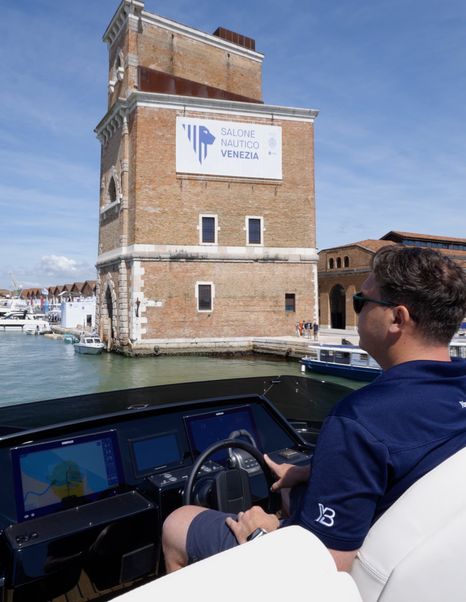
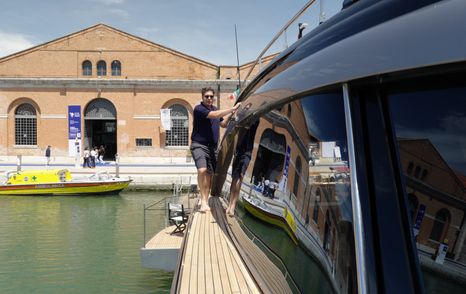

At Sea
Time on the GTX70 was limited - just a short run outside the Venice lagoon - so it was a quick impression rather than a full shakedown. Conditions were lumpy in the shallows near the entrance, so it wasn’t the easiest setup for stretching the boat’s legs, but 35 knots came easily enough going downwind.
That’s the nature of the GTX range: it’s not a hair-on-fire performer chasing 40–50 knots like the X series, but instead offers a more relaxed, comfortable cruising experience. The top speed is 35 knots, with a fast cruise between 25 and 30 knots, giving a practical range of around 300–400nm.
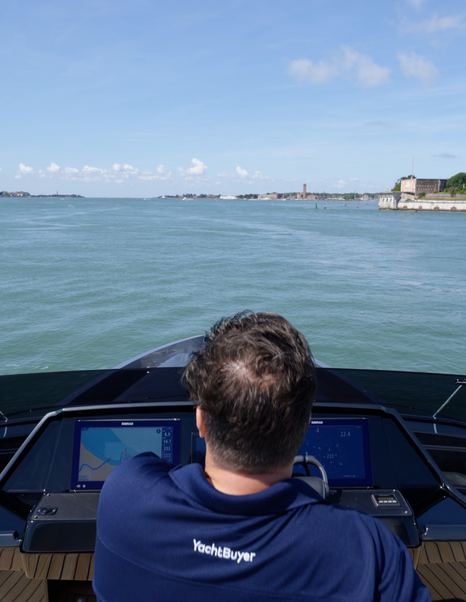

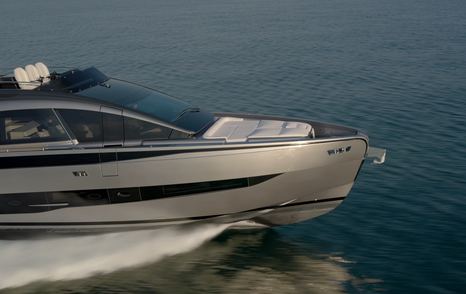
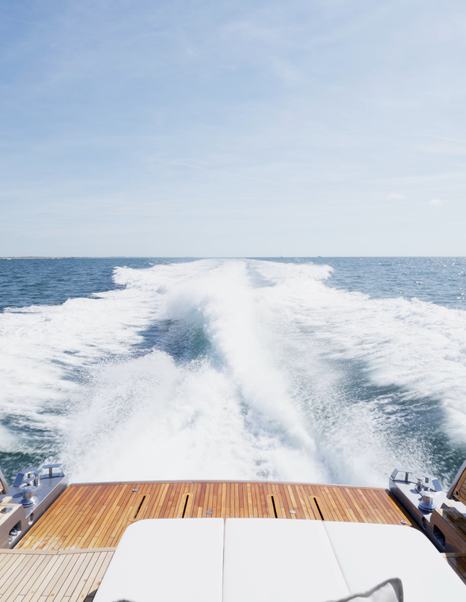
The key takeaway is how unintimidating the GTX70 is to drive. This is a boat an owner could handle themselves. With triple IPS, two throttles, and joystick control at speed, it’s very manageable. The Humphree system looks after the trim, so there’s not much to think about - set the speed and enjoy the ride.
Handling is sharp for an IPS setup. Often, IPS boats can feel a little muted, but the GTX70 has a sporting edge - turn the wheel, and the response is confident. It’s engaging without being the kind of white-knuckle surface-drive experience that leaves you sweating at the helm.
There’s no rooster tail here, just a steady 30-knot cruise. Even in the chop, the boat felt solid, carving through the waves with no problem. The hull’s slender proportions for its length help keep the motion smooth and predictable. It's the Pershing your grandmother could drive.
It's quite telling, in fact, that the Princess S72, a rival with more space and an extra cabin than the Pershing, has a higher top speed than the GTX70.
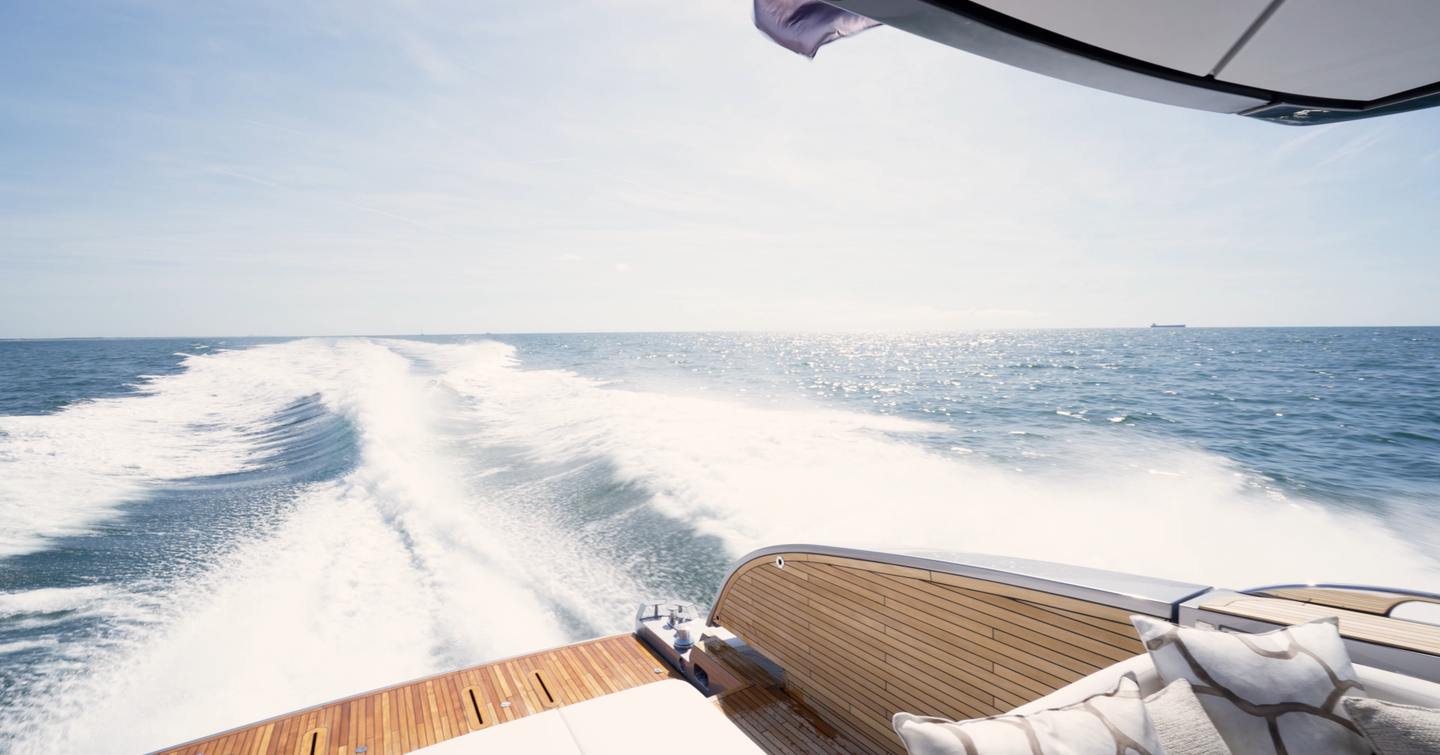
The GTX70 is part of Pershing’s Sport Utility Yacht concept, a series that blends the brand’s signature aggression with an added focus on space and outdoor living. You get expansive decks, fold-down terraces, and big windows. Pershing claims the GTX70 offers 30% more exterior area and 10% more interior volume than similar-sized yachts, which is a big statement in a 22m (72ft) package.
Designed by Fulvio De Simoni with naval architecture by the Ferretti Group, the GTX70 sits at the entry point to the range. At 5.42 meters wide, it’s a slim, sharp hull with a convex sheerline, a vertical bow profile, and fold-down terraces at the beach club - a new feature for Pershing and a shift away from the pure speed focus of the older X models. Those boats had surface drives, narrow beams, and top speeds pushing 45 knots. The GTX70 dials things back a bit, topping out at around 35 knots thanks to triple 900hp Volvo Penta D13 IPS1200s. It’ll cruise comfortably at 30 knots, with a CE Category A rating.


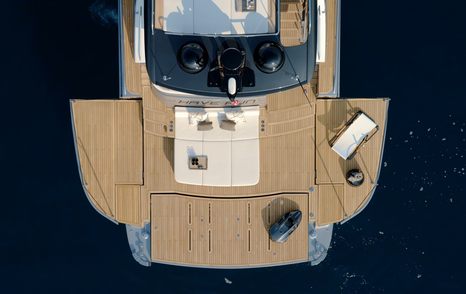
It’s still every bit a Pershing when it comes to looks - low profile, metallic grey finish, and a Gran Turismo-inspired vibe that balances sportiness with long-range comfort. But there are trade-offs. That narrow beam means the interior is compact rather than cavernous, and while the GTX70 can sleep six guests across three cabins, there’s no dedicated crew cabin - just a small bow space accessed via a deck hatch.
Side decks are narrow and raised, with low rails and an awkward step up, making movement along the sides a bit of a process. The flybridge, while well-appointed, remains small, which is an inevitable result of the sleek profile.
Carbon fibre detailing runs throughout - on the sun loungers, the bimini, the helm - strong and trimming off weight. The fold-down wings extend the aft deck into a 23-sq/m (247.6 sq/ft) terrace, and a flat deck runs from stern to helm for easy movement.
Inside, the look is dark, clean, and modern, with hidden storage and signature lighting, though some storage areas feel a bit limited and may take time to figure out. It’s a space built for owners who value the driving experience as much as the comfort, and the helm reflects that: joystick controls, stabilisers, and the IPS setup make handling straightforward, letting you enjoy the performance without breaking a sweat.
The GTX70 is all about balance. You give up some space and a bit of crew practicality, but you gain a boat that looks sharp, handles beautifully, and brings the excitement of a sports yacht into a more liveable package. Just be ready to accept the trade-offs that come with that narrow profile.
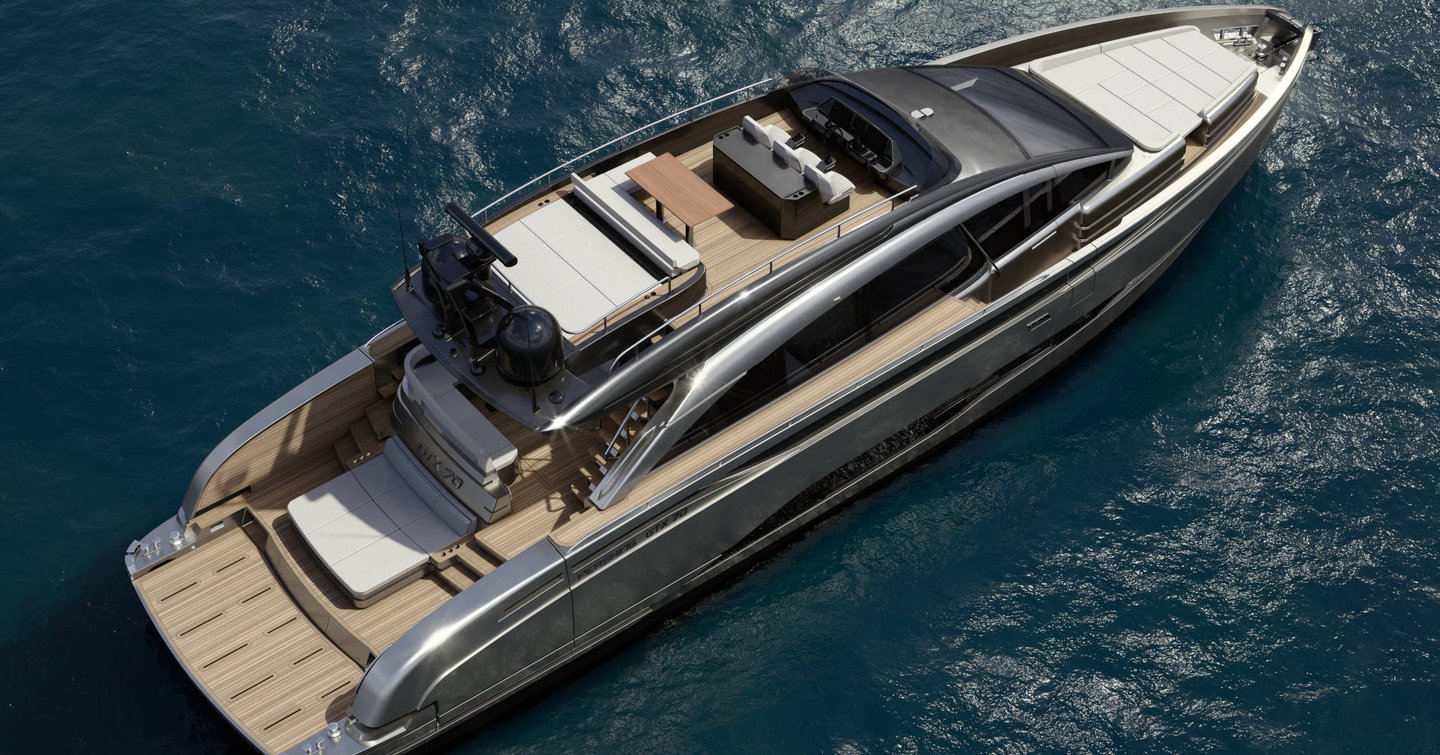
Engine Room
Pershing engine rooms are always a bit of fun, and the GTX70 is no exception. Access is via a cockpit hatch, and once inside, it’s a busy space - this boat packs in three engines and three pods, a generator, water maker, and the Seakeeper stabiliser is located underneath. The stabiliser is primarily used to steady the boat at rest, as it’s not much use when running at speed. A pricey addition, but worth it when you’re anchored.
Fuel filters are mounted above the deck plates, making them easy to access, though headroom is pinched by the low terrace deck overhead. That said, initial access down the ladder is good - you drop right into the middle of the space. The floor’s chequer plate throughout - hard on the feet and knees, but durable and easy to clean - and the deck panels lift for bilge access.
It’s a fairly compact engine room given the amount of machinery packed in here, but it’s laid out so you can still get the job done.
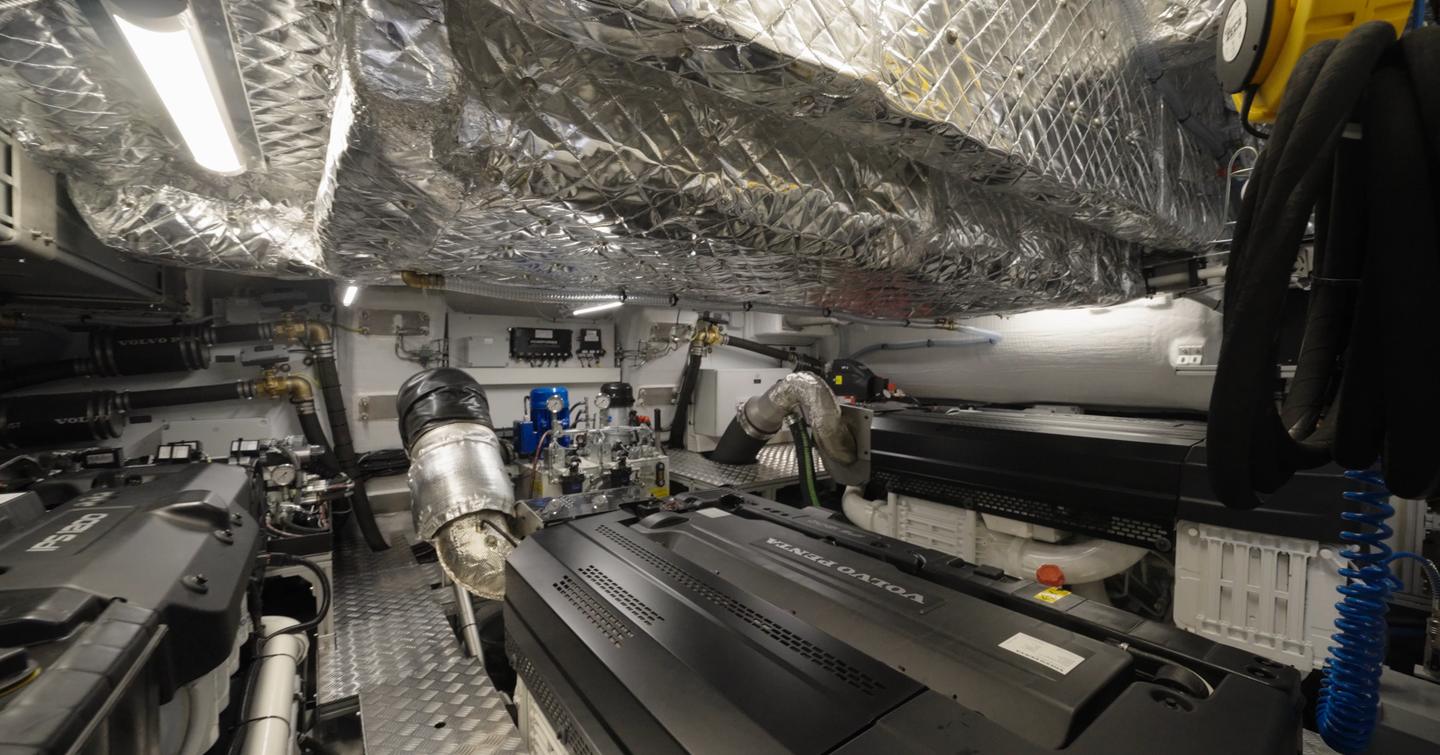
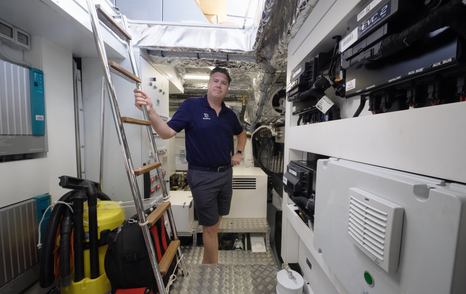
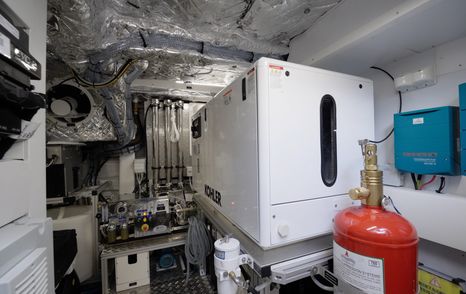
The saloon carries a clear sense of form over function, but in a way that suits a boat like this. It’s clean, modern, and cool, without going overboard - rounded edges soften the space, so you don’t get harsh, angular lines everywhere. Even the galley has a seagoing feel to its shape, so you can wedge in comfortably if you need to when the boat’s on the move.
What’s clever is how the space flows. From the terrace deck up, the flooring stays completely flat to the helm, so moving through the saloon is easy. Storage is tucked away throughout - you have to figure out where everything is. The fridge is hidden over here, a domestic-size model with a freezer below. Glasses, crockery, and stemware are all stashed neatly up top, so everything’s secured for fast cruising.
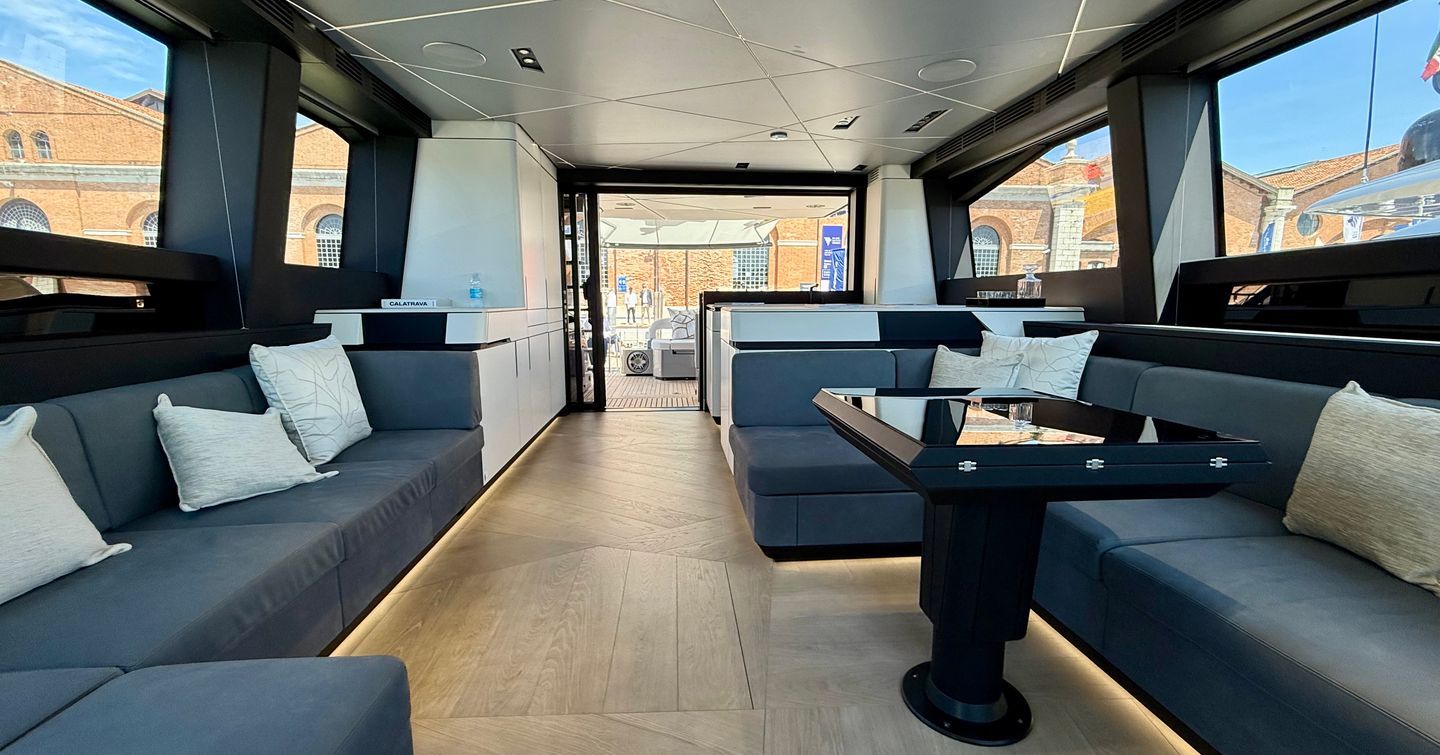
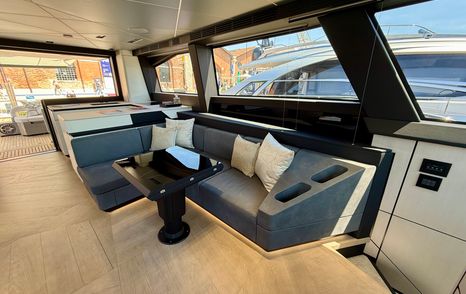
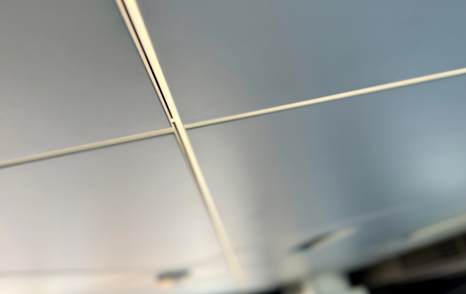
Galley and Dining Area
The galley is kitted out with an induction hob, though realistically, this probably isn’t the sort of boat where much indoor cooking happens. Still, the option’s there, and the layout works nicely with the cockpit dining space outside. The window drops down, the sliding door opens, and it’s easy to serve drinks or snacks directly across.
The detailing in here is smart. That GTX lighting motif, with the strip and X-shaped patterns running across the ceiling, looks great. And while the beam is relatively narrow, it doesn’t feel cramped - furniture is pushed out to the sides to maximise the space, helped by those high side decks.
There are sofas on both sides, with one facing the TV, which tucks away into the cabinetry when not in use. It’s all comfortable - plenty of soft, squishy cushions - and the internal dining table sits on the port side. It has a high-gloss finish that looks the part, though it’s definitely going to show up fingerprints.
Practical touches include recessed wells dotted around the space for loose items, plus cup holders for securing phones and drinks. It’s a semi-performance boat, so keeping everything safe and secure is key.
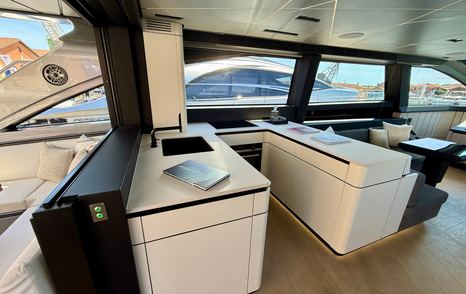
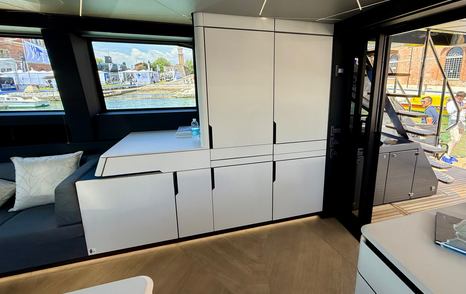
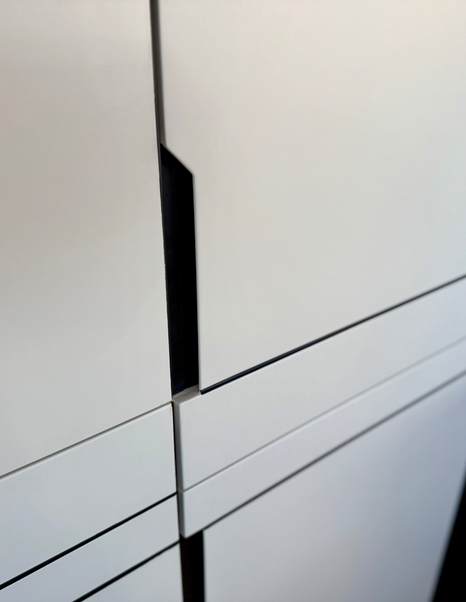
The central helm layout pushes the staircase to port, so most of the accommodation sits on the starboard side. It’s a three-cabin arrangement: a VIP cabin forward, a twin, and a full-beam owner’s suite amidships, with a day head serving the twin.
Owner’s Suite
Amidships, the owner’s suite is the standout. Storage is built in discreetly, with no visible handles - everything is hidden behind big, dark, glossy panels, so it takes a moment to figure out where everything is. The cabin feels luxurious with a big bed, a flat floor throughout, and a large sofa off to one side. The hull windows aren’t huge, but they bring in enough light, and the opening ports mean you can get some air through. There’s a large walk-in wardrobe to starboard, with even more storage as you enter the cabin.
Lighting strips - rather than the X motif found upstairs - run behind the bed, making it a modern, moody space. A massive TV is built into the bulkhead, blending into the piano black finish so it doesn’t dominate the cabin.
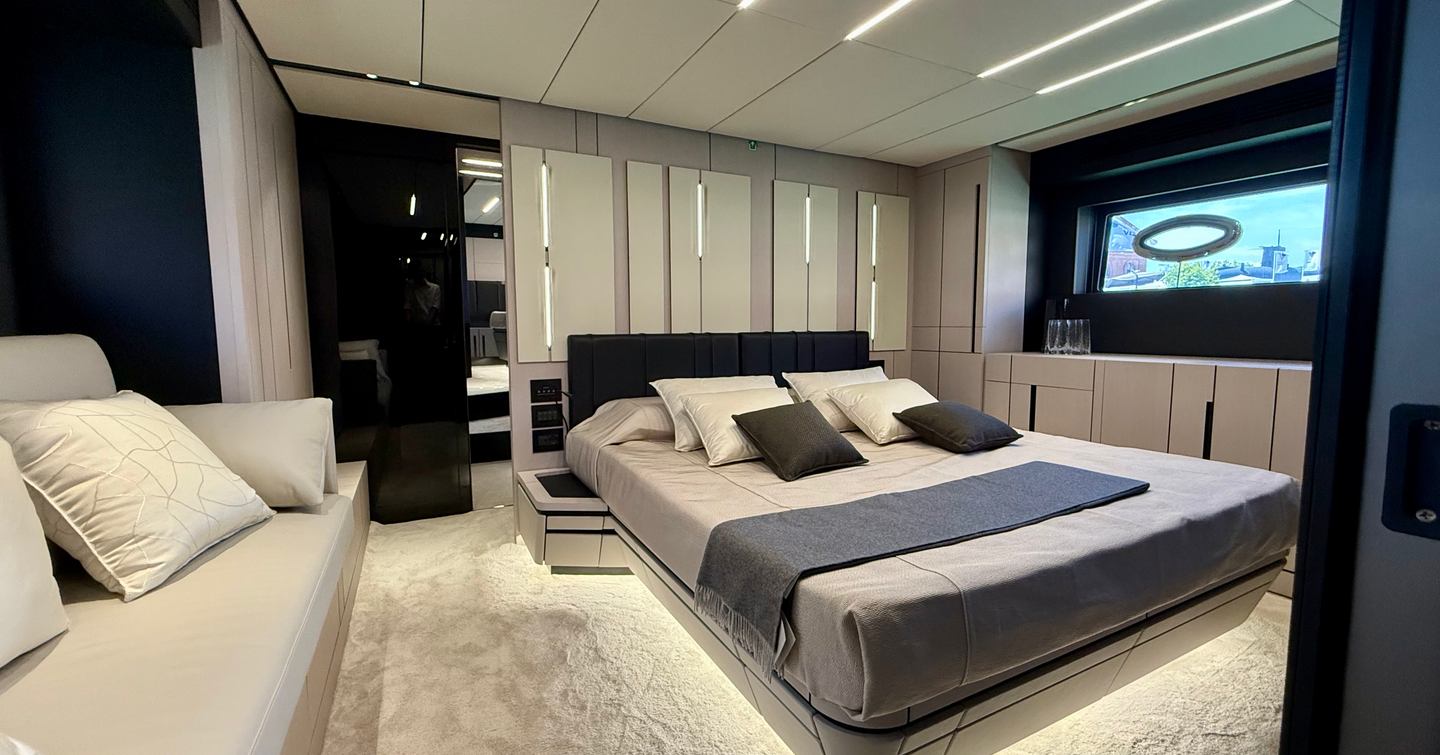
The bathroom - or "Darthroom" - carries on the same bold, dark theme with the black toilet and bidet that bear a striking resemblance to Darth Vader's helmet. It’s an imposing look, but done well. There’s enough space to house both a toilet and a bidet, along with a good-sized sink, storage beneath, and a large mirror above. The shower at the back is smartly fitted with a rain shower head. It’s a cool, distinctive space - unmistakably Pershing.
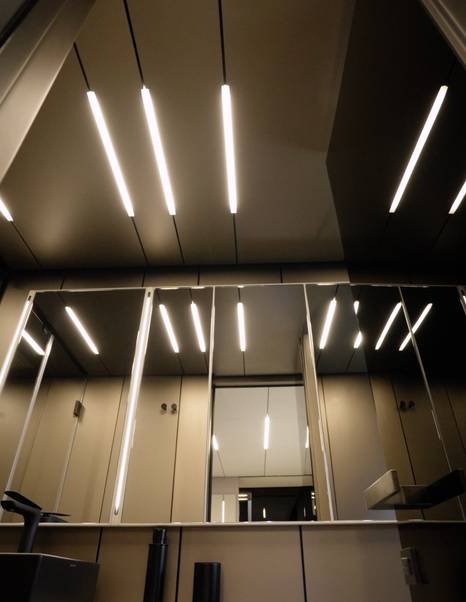
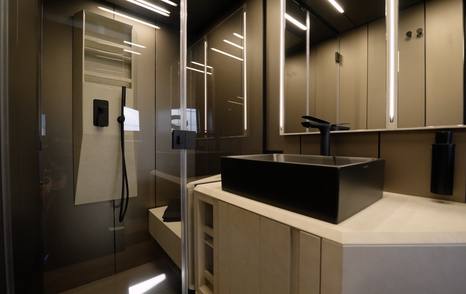
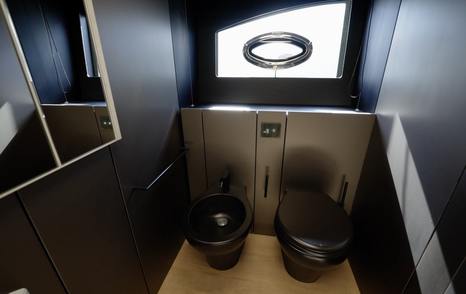
VIP Cabin
The VIP is tucked into the bow, and the design makes the most of the narrow, tapered shape. The bed runs athwartships, which avoids cramming it into the tight forward end and leaves decent space to walk around. There’s still room for a TV and a private bathroom, complete with a proper separate shower. The styling is exactly what you’d expect - sleek, dark, and again very Pershing. Black and grey dominate the palette, giving it a masculine feel.
Storage runs behind the piano black panels, all hidden away neatly, much like in the galley. It takes a bit of learning to figure out where everything is, but it’s all there - bedside tables, electric blinds controlled from the bed, reading lights, and a small bench at the foot of the bed for shoes or bags. There’s no skylight, but an escape hatch is fitted if needed. It’s a tight space, dictated by the bow shape, but the layout decisions make it work surprisingly well.
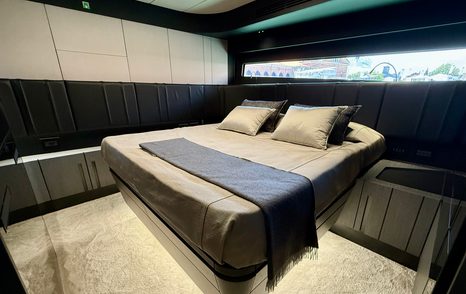
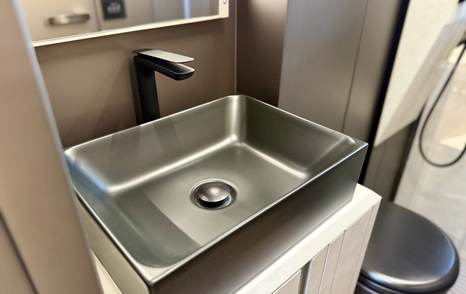
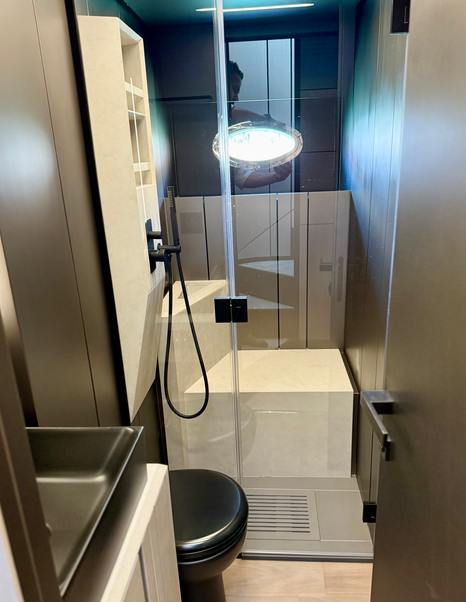
Amidships Cabins
The day head is positioned conveniently by the stairs and also serves as the bathroom for the twin cabin. It’s a decent size, with a separate shower cubicle rather than just a basic toilet arrangement. The twin itself is a practical space - there’s a step in the floor, but headroom is good. Storage includes a wardrobe tucked behind the door, and the cabin has a TV mounted on the wall. The spec mirrors the VIP, with electric blinds, air-con, and lighting controls. Natural light comes in from a hull window, with an opening port for ventilation.

Upper Helm
Pershing knows how to design a helm that makes you want to drive, and the GTX70’s upper helm is no exception. The driving position is fantastic - centrally located with navigators flanking the helm, and the controls right under hand. The joystick and bow thruster are exactly where you’d want them, so you can sit back in the seats and handle the boat without fuss.
The layout is clean and logical, with twin MFDs providing clear information, though they are a bit of a stretch from the helm. Visibility is good, and the stubby windscreen does a surprisingly effective job of deflecting wind over your head. On a warm day, it’s a brilliant spot to drive from - comfortable, connected to the elements, but without a full blast of the wind in your face.

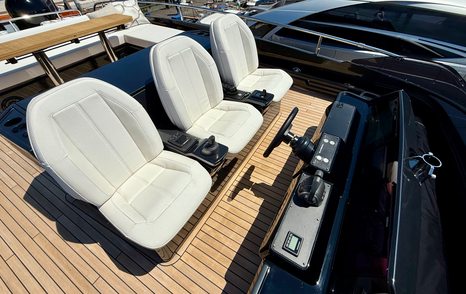
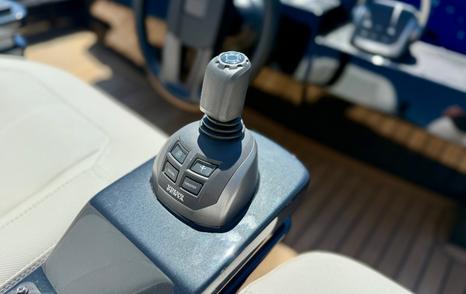
If the upper helm feels special, the lower helm takes it up a level. This is where Pershing leans into its theatre-of-driving design language. Sitting high in the middle of the space, surrounded by carbon fibre and dramatic angles, the helm feels more like a cockpit than a traditional console.
The MFD box sits fairly high, but from the raised driving position, there’s a clear view over the bow. The layout feels fighter-jet inspired - switches and controls neatly lined up, clear labels, and a joystick that allows you to drive the boat at speed as well as around the marina.
Throttle placement does feel a little distant, but with triple IPS, most of the time you’re relying on the joystick anyway. At 25 knots, the helm is a calm, refined space - quiet even with the rear doors open. And with the GTX70’s performance, a steady 30-knot cruise is very achievable in the right conditions. It’s an experience that blends ease with excitement - sat in the middle of the boat, carbon fibre all around, skimming across the water at 25 knots with no real effort required.
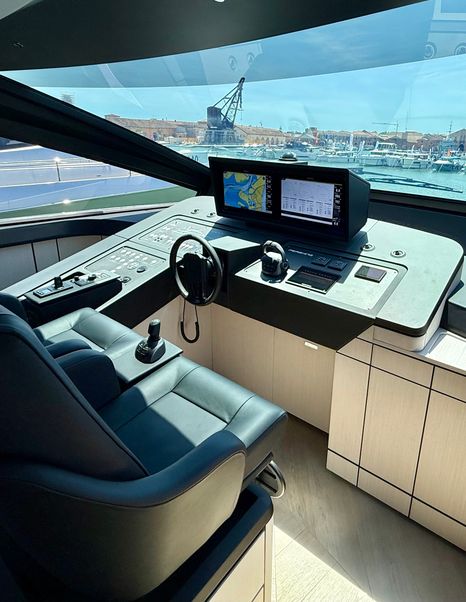
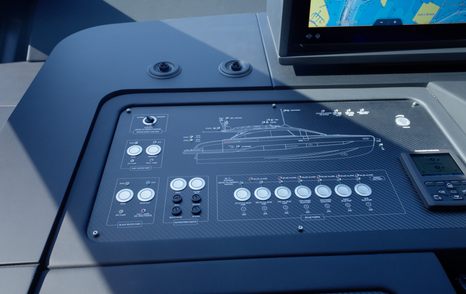
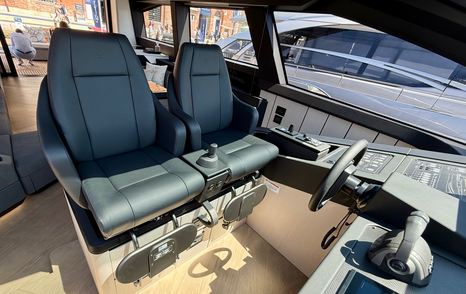
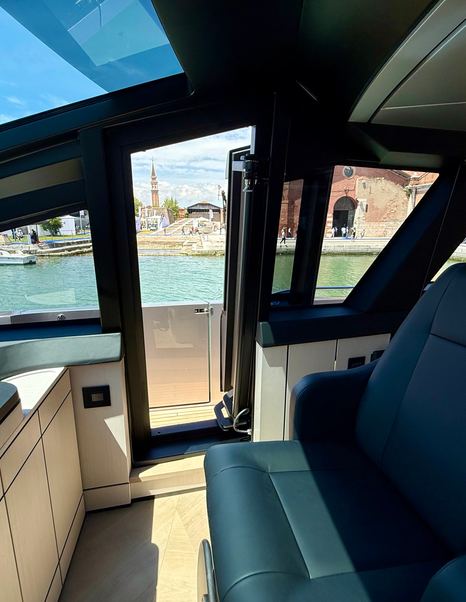
Plenty is going on at the aft end of the GTX70. The hydraulic bathing platform lowers into the water for launching the tender or a SeaBob. A passerelle extends from under the deck, giving access to the pontoon when moored stern-to.
The wings fold neatly against the hull when not in use, but once dropped, they extend the deck space by a useful 23 square metres (247.6 square feet). With the passerelle retracted, the aft section lifts to the same level as the wings, creating a flat platform that makes moving around quite easy.
There are a few nice details here too, including a carbon fibre deck chair - an eye-catching touch, and part of the wider carbon fibre finishes found across the boat.
A large sunbathing area is set aft, with the option of a push-out shade that extends over the space. The cockpit itself benefits from the overhang, but the additional shade provides more flexibility on a hot day.
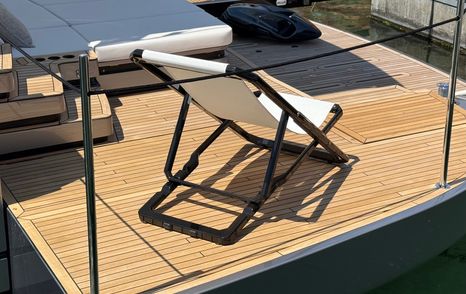
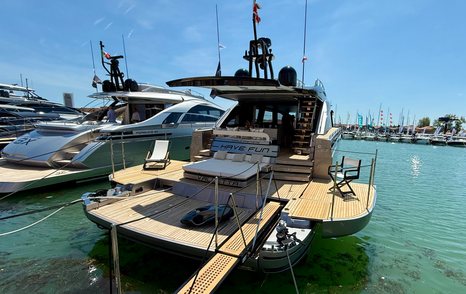
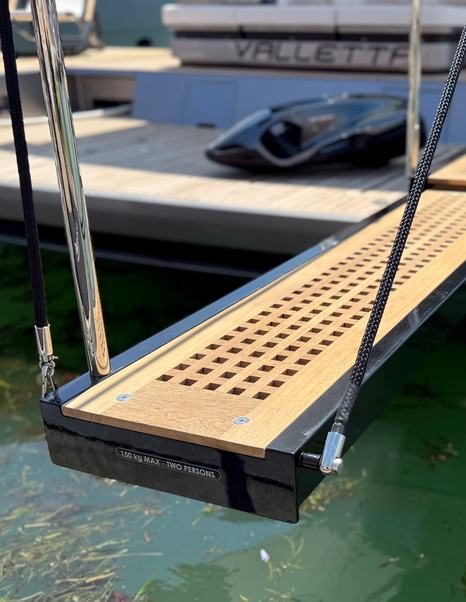
Storage beneath the sun pad is useful for lines, fenders, and cleaning supplies - not a garage, but a practical space. The flybridge staircase sits at the cockpit entrance, well connected to the main staircase and the passerelle for straightforward access across decks. A central control panel handles all the folding, sliding, and opening systems from a single point.
The cockpit serves as the main outdoor dining area, shaded under the overhang. The table doubles in size when opened and has an electric pedestal for adjusting the height or dropping down to seat level. With cushions added, the space becomes an additional sun pad - but it's in the shade, which might suit on a warm day.
Additional storage and a fridge are fitted opposite, complementing the galley just inside. The connection between the cockpit and galley is straightforward, with a drop-down window and a sliding door to starboard for easy movement between the two.

Side Decks & Foredeck
One of the compromises in the design is that getting onto the side decks is a bit of a tricky process. There are small steps up to the side decks, which feel pretty exposed. There’s a railing up top and a rail at toe level, but realistically, when the boat’s rolling, the fenders are out, and you’re trying to work the lines, you’ll be grabbing onto the superstructure.
There is a solid handhold further down, which will help steady you as you move aft. Once you get in line with the windows, it feels a lot safer. And with the side door next to the helm and side gates, it’s easy for the skipper to step straight onto the pontoon, especially starboard side-to.
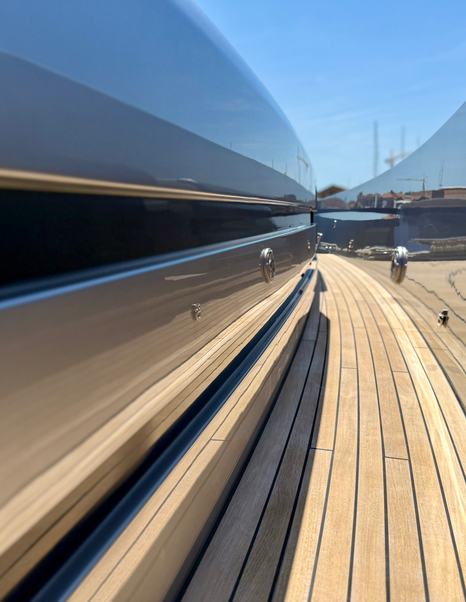
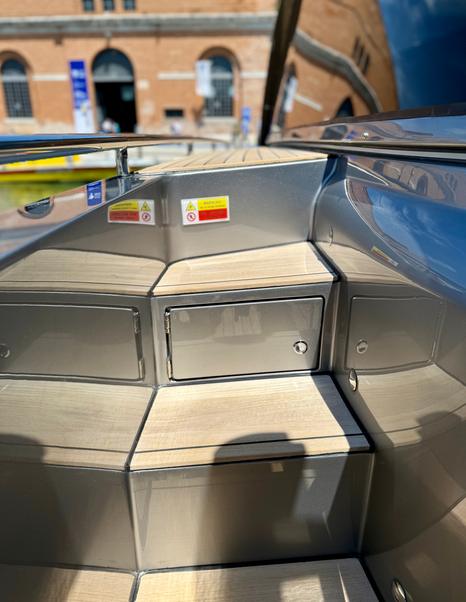
The bow gives a real sense of the boat’s shape. It’s narrow, sleek, and sharp, with a windscreen that stretches back in a single sweep, finished with a single wiper. There’s a shallow bench seat forward of the windscreen, and a large table that folds out, so you can dine up here if you like. Shade can be added, though without it, it’s a full-sun spot. The lines are clean and crisp. The side railings are low and not very practical, but that’s the price you pay for the boat’s sleek, pointed profile.
Up at the bow, there’s the anchor windlass, big cleats on either side, and fairleads built into the bulwarks. The anchor locker is tucked in as expected.
Below the forward cushions, there’s a deck hatch leading down to the crew space - a pair of bunks and a separate bathroom. It’s not exactly plush, but it’s there if needed. Realistically, though, this is a Pershing that’s meant to be run by the owner, so that crew area is likely surplus to requirements - handy for storage though.
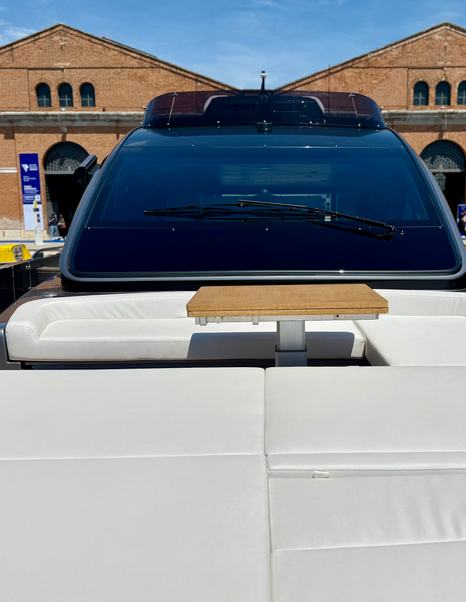
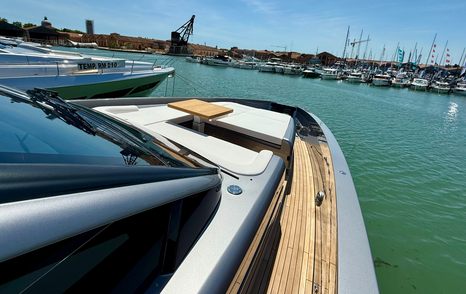
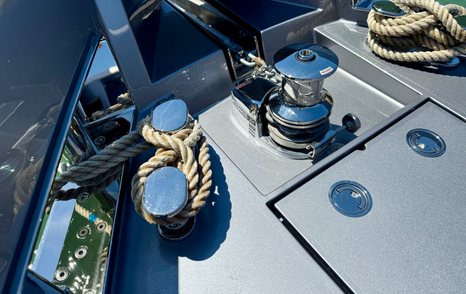
Flybridge
At first glance, the flybridge doesn’t seem like it would have much going on, given how sleek the design is. But there’s a lot packed in up here. Right aft is a sunbathing space with a two-way backrest - set it up as a headrest when lying flat, or fold it down as part of the dinette arrangement. The table itself is a good size, matching the one up at the bow, and it folds out so you can dine up here if you want to.
To make that happen, the wet bar sits centrally, kept low for obvious reasons. There’s a hot plate, a decent sink, an ice maker, a fridge, storage, and also a bin underneath.
One of the standout design details is the carbon fibre bimini. These things are usually big, heavy, and awkward to move around, so using carbon fibre here is a smart (but expensive) solution. When it’s folded away, it tucks in neatly in front of the helm and practically disappears - very tidy and very elegant.
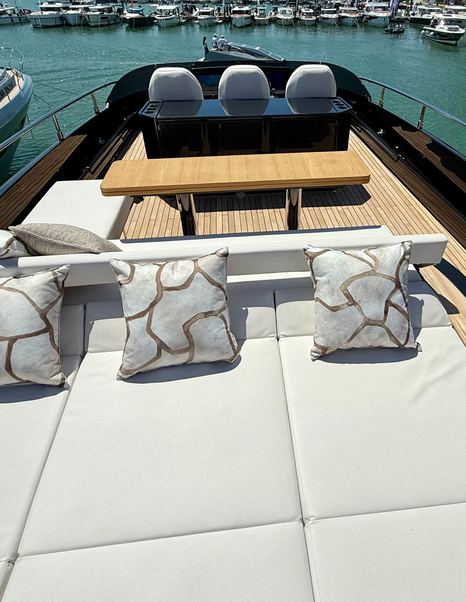
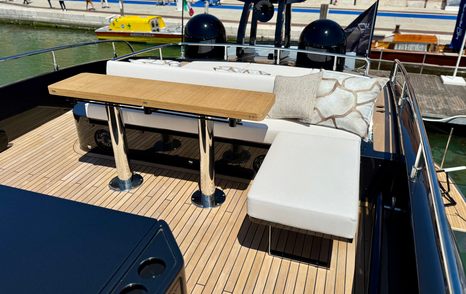
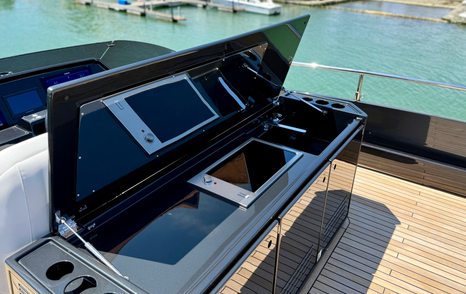
It's hard to assess value for money without pricing, and Pershing refused to supply us with a price for the GTX70. Pershings do tend to command a premium over their rivals, a lot of that down to the quality of the build and the engineering costs of large engines and surface drives.
This isn't the case with the GTX70, but you have to factor in the maintenance costs of three engines and three IPS pods, which all need individual services on top of the engines.
Our Verdict
Some might argue the GTX range is Pershing diluting its core DNA. And, in a sense, it is – this isn’t chasing outright, high-octane performance like the X range. But it’s a logical step for Pershing. If the goal is to make these boats appeal to more than just the go-flat-out crowd, especially to those who want to run the boat themselves, this makes a lot of sense.
Sure, there are compromises. Compared to other 70-footers, the GTX70 has less living space and sleeping space - it’s narrow and sharp. But if you’re after strong performance in a sleek package that’s a bit more manageable, that’s exactly what the GTX70 delivers.
Reasons to Buy
- Easy to handle
- Slick styling
- Excellent helm positions
- Clever aft deck
- Fit & Finish
Things to Consider
- Precarious side decks
- Poor crew cabin
- Only three cabins
Looking to own a Pershing GTX70? Use YachtBuyer’s Market Watch to compare all new and used Pershing GTX70 Boats for sale worldwide. You can also order a new Pershing GTX70, customized to your exact specifications, with options for engine choice and layout configuration. Alternatively, explore our global listings of new and used boats for sale and find your perfect boat today!
Rivals to Consider
The Pershing GTX70 offers a three-cabin layout for six guests, with a standout full-beam owner’s suite that includes an ensuite, hull-side windows, and a walk-in wardrobe. The Sunseeker Manhattan 68, by contrast, can sleep eight guests across four cabins, with a private staircase leading to the full-beam master cabin amidships, offering flexibility and a bit of separation from the guest areas. It’s designed as a family cruiser, with a redesigned flybridge that’s larger, with an ergonomic console and versatile seating that makes it a proper social hub.
The Cranchi Sessantasette 67 Corsa is also designed for eight guests in four cabins but takes a more relaxed approach. It has a distinctive Mediterranean feel, with an open stern cockpit and large windows for light and ventilation. A notable feature is its mini-fly without a T-top, which keeps the lines sleek and gives the yacht a sporty, unfussy look.
The Fairline Phantom 65 strikes a balance between performance and comfort. It offers up to four cabins for eight guests, a 26-knot cruising speed, and a top end of 36 knots. A key feature is its integrated tender garage, big enough for a Williams 345 SportJet, which is neatly tucked into the stern without spoiling the lines. Surprisingly, with its powerful shaft drive engines it's quicker than the Pershing.
The Pearl 72 stands out for offering two master cabins - one forward with a private entrance, the other amidships - which is rare in this size range. It can sleep up to eight guests across four cabins and cruises at 25 knots. The layout is designed to give owners and guests more flexibility, with separate spaces that still feel connected thanks to clever design touches.
Considering a new boat? Explore Pershing's entire current range to find the model that best suits your needs, and compare it with alternatives from competitors to ensure you make the perfect choice.
Specifications
- Builder Pershing
- Range GTX
- Model Pershing GTX70
- Length Overall 21.76m
- Beam 5.42m
- Draft(full load) 2.04m
- Hull Fibreglass
- Cabins 3
- Berths 6
- Crew 2
- Cruising Speed
- Max Speed
- Fuel Capacity 4,200 Litres
- Fresh Water Capacity 1,000 Litres
- Engine Model 3x Volvo Penta D13-IPS1200
- Engine economic speed 10.6 knots
- Engine max range (speed type) 495 (nm)
Interested in a Pershing GTX70?
NEW Build
Find your local dealer for a personalised, no-cost consultation
or just request
Brochures & Pricing
Used & In Stock
Looking for a ready-to-go Pershing GTX70 or pre-owned options? Explore all inventory of the Pershing GTX70 available worldwide
